Some Observations on the State of the Stream Restoration Practice and the Continuing Bane of Widgets
A young colleague of mine recently sent me an article written 20 years ago detailing a channel relocation project I helped design and build with the question: “do we ever apply old lessons”? The author of the article stressed the client’s and regulator’s pleasant surprise seeing a natural appearing and functioning creek built out of whole cloth and our belief that multi-disciplinary design/build projects are the only viable path to high quality projects that look and function like natural systems.
I was introduced to “aquatic restoration” as a freshly minted BS Biology degree holder in 1984 employed by the US Forest Service as a wildlife and watershed technician on the North Fork of the Clearwater River. This sparked an interest I’ve followed through graduate school and 27 years of consulting practice. While working with the USFS, our “habitat enhancement” work consisted largely of cabling rootwads to banks, (which we began calling “bobbers” due to their tendency to bob like corks at high flow with zero habitat enhancing properties), manually repairing large log drop structures placed several years previously that required constant maintenance so they didn’t blow up, or simply tripping whole trees into channels and letting mother nature sort out the woody debris placements thereafter.
Time showed the only effective practice was the pragmatic concept that if a system was shy on woody debris why not just send out technicians to randomly fell conifers into woody debris starved channels and let Mother Nature sort the rest out? No maintenance, no cables or bobbers. Or use dynamite?
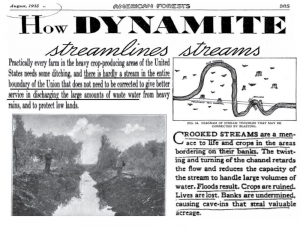
This approach became a metaphor and template for my approach to aquatic restoration – “if it looks like nature and it isn’t too complicated, it will probably act like nature” and the reverse corollary, “if you are doing natural channel design and restoration, why are you going to the hardware store that has a special on “widgets” – the cable, shackles, rootwads and boulders – “on sale now on Aisle 14”? I’ve found the “looks like nature” part is an interdisciplinary undertaking that takes LOTS of actual practice to get better, and where that is lacking, projects typically fail to meet project objectives centered on “improvements in ecological function” – which is actually the heart of restoration.
Where Are We Now?
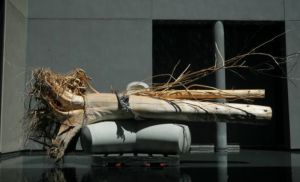
As much as I would like to say river restoration has become an actual science since 1984 I can’t. While there are regional expertise pockets with a tradition of interdisciplinary innovation, aquatic restoration projects are typically conceived through the very small lenses of restoration “cookbooks,” civil engineering, bureaucracy and permitting rather than through the kaleidoscope of hydrology, aquatic ecology, fluvial geomorphology, botany, advanced bioengineering and wetland science.
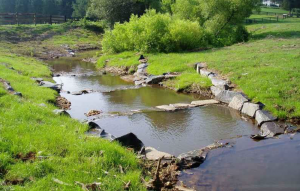
For example, colleague Mark Beardsley of Ecometrics, Buena Vista, CO, has been monitoring long-term effects of structure based stream enhancement efforts on nine project sites for 8-12 years after construction. Despite the best intentions and several million dollars were spent he concluded: “Measureable improvements to ecological condition were small or insignificant. Treated reaches do not tend to be any more resilient to external perturbations, and in fact may be less self-sustaining due to the reliance on artificial stabilization measures and structures.” Yet, the design and implementation of similar projects using outdated strategies continues across the region. While only one study sample, increasing numbers of scholarly articles are indicating poor success across the US.
Measureable improvements to ecological condition were small or insignificant. Treated reaches do not tend to be any more resilient to external perturbations, and in fact may be less self-sustaining due to the reliance on artificial stabilization measures and structures.
How Did We Get Here?
There are a number of factors that have stymied both academic and practitioner breakthroughs in aquatic restoration that include:
- A significant part of my practice era was dominated by the legions of David Rosgen, a former US Forest Service hydrologist who entered the field of aquatic restoration in 1985 and rose to fame,(or infamy to some), by creating a series of costly training courses offering various certificationlevels for attendees. While a massive and controversial topic unto itself, my experience interacting with Rosgen’s many disciples, and in addition to observing dozens of projects designed and built with his principles, has seriously restricted creativity and innovation in the field of natural channel design and construction. Almost without exception, the project designs coming from these trainings are heavy on wood and rock widgets for pretty much every problem, environment or stream type and predictably this popular but cookie-cutter approach does not often result in projects that have stood the test of time.
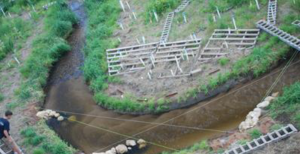
Figure 4. The still popular “widget” approach to stream restoration which precludes a basic understanding of fluvial geomorphology and ecology. - Related to the above, some project sponsors, agencies and consulting professionals have taken on the posture of “experts” in stream restoration without actually having designed or constructed more than a handful of projects, much less having monitored their performance for years if not decades to assess what works and what doesn’t. As a group it behooves project sponsors to embrace complexity and seek out professional expertise that has a deep portfolio of successful and innovative work.
- There is a significant lack of mentoring of young practitioners in the multi-disciplinary approach as the number of late career professionals who can provide this mentoring are declining in numbers. There is a deep body of applied knowledge that is not being effectively transferred to the next generation of restoration professionals. The importance of quality mentoring and experience cannot be understated.
A Way Forward?
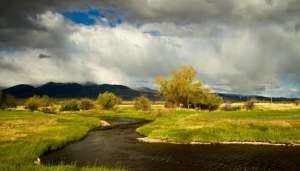
My conversations with other experienced multi-disciplinary restoration practitioners are not particularly encouraging with respect to an honest assessment of what natural channel design and construction practices work or don’t work and how that is measured. Channel widgetry and pseudo-scientific cookbook approaches for complex restoration problems is now normalized. However, there are some signs that the academic community, drawn into the restoration conversation based on the enormous amounts of money being spent, will become increasingly influential in the study and promotion of science-based methods in the field.
In the meantime, I believe it is up to practitioners who experience includes getting humbled by the inherent complexity of aquatic restoration problems to continue insisting on and promoting evolution of the fluvial restoration field. While I have been impatient, it may take another 30 years before a more universal, multi-disciplinary scientific foundation for natural channel restoration is established. In the end, a marathon, not a sprint!




